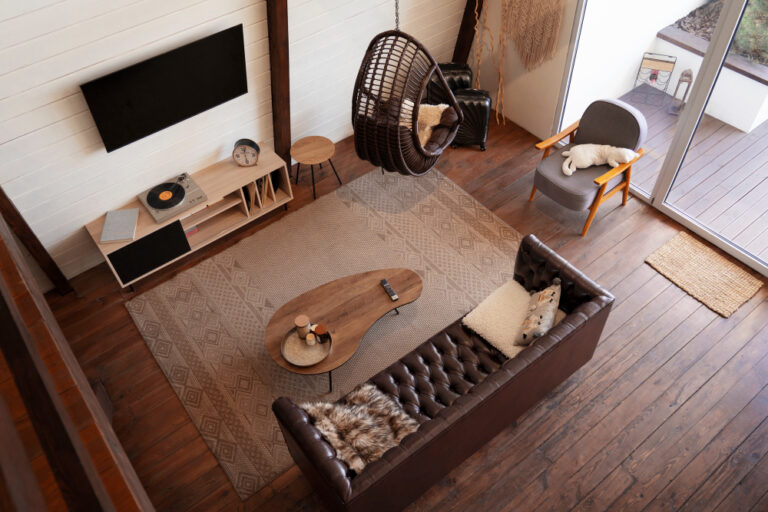Virtual Staging has become an invaluable asset in the real estate industry, revolutionizing how properties are showcased to potential buyers. This innovative approach entails using computer-generated images to enhance and transform vacant or poorly furnished properties, making them more appealing and attractive. In the following sections, we will delve into the advantages of virtual staging, the process involved, and its impact on the housing market.
Table of Contents
Benefits of Virtual Staging
Virtual staging offers numerous advantages for both sellers and real estate agents. One of the most significant advantages is its cost-effectiveness. Traditional staging can be expensive, requiring the purchase or rental of furniture, decor, and the services of a professional stager. In contrast, virtual staging provides a more efficient alternative, as it eliminates the need for physical items and can be done entirely using computer software. This cost-saving element makes it an appealing option for property sellers looking to maximize their return on investment.
Customization and Flexibility
Additionally, virtual staging a home allows for a level of customization and flexibility that is difficult to achieve with traditional staging. With virtual staging, sellers can choose from a variety of interior design styles, layout designs, and furniture arrangements to create a tailored look that appeals to their target demographic. This level of personalization can help potential buyers visualize themselves living in the space, ultimately increasing the property’s appeal.
Key Stages of Virtual Staging
The process of virtual staging involves several key stages. Firstly, high-quality photos of the empty or poorly furnished property are taken. These photos serve as the material upon which the virtual staging will be performed. Once the images are captured, they are transferred to a computer, where a professional visual designer or virtual stager works their magic. The virtual stager begins by digitally removing any existing furniture or decor from the photos, creating a clean slate. Then, they add computer-generated furnishings, decor, and other elements to transform the space. Virtual additions are meticulously selected to complement the property’s style and layout, creating a unified and attractive presentation. Consequently, the photographs highlight the property in its optimal form, significantly enhancing its appeal to prospective buyers.
Impact of Virtual Staging on the Real Estate Market
The impact of virtual staging on the housing market is significant. It has proven to be an effective tool for increasing a property’s appeal and generating additional interest from potential buyers. Here are several key ways in which virtual staging influences the real estate industry:
1. Enhanced Presentation: Virtual staging helps properties present their best selves in listing photos and online marketing materials. This polished presentation creates a positive first impression with potential buyers, drawing them in and generating interest.
2. Faster Sales: Staged homes tend to sell faster than empty or poorly furnished ones. Virtual staging accelerates the selling process by making properties more attractive and appealing, leading to quicker sales.
3. Increased Property Value: Virtual staging can often increase the perceived value of a property, which can justify a higher listing price. This can result in better returns for sellers.
4. Targeted Marketing: Virtual staging allows for customization to appeal to specific buyer demographics. Whether it’s a modern, minimalist look or a more traditional style, virtual staging can tailor the presentation to attract the right audience.
5. Cost Savings: Compared to traditional staging, virtual staging is a cost-effective solution. It reduces costs associated with purchasing or renting physical furniture and hiring professional stagers.
5. Versatility: Virtual staging can be used for a wide range of properties, from apartments and condominiums to large single-family homes. It is adaptable to various architectural styles and layouts.
6. Seller’s Perspective: Sellers benefit from virtual staging as it enhances the property’s true potential, leading to higher offers and a faster sale. It can also reduce the hassle of maintaining a fully staged property.
7. Realistic Perception: Virtual staging produces lifelike images that provide potential buyers with a realistic view of how the space could be furnished and decorated, helping them make informed decisions.
Transformation of Real Estate Industry
Virtual staging a home is transforming the real estate industry by offering a cost-effective and highly customizable solution for enhancing property presentation. With its ability to create visually appealing, personalized spaces, virtual staging enhances a property’s appeal, accelerates sales, and generates better returns for sellers. As technology continues to advance, virtual staging is likely to play an even more significant role in the housing market, making it a valuable tool for both property sellers and realtors.
Conclusion
In conclusion, virtual organizing revolutionizes the real estate market by utilizing computer-generated imagery to transform empty or poorly furnished properties into visually appealing spaces. This article has highlighted the diverse benefits of virtual organizing, its intricacies, and its significant impact on the presentation of homes to potential buyers.

